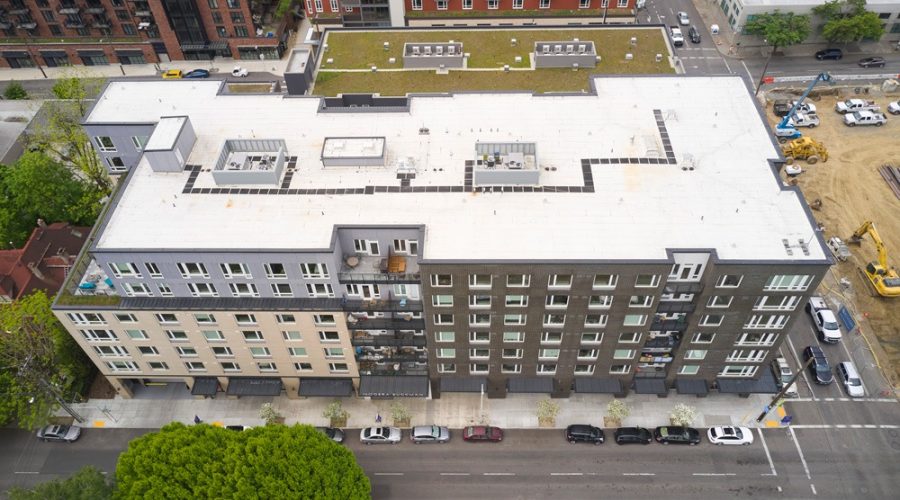Comprehensive Guide to Commercial Roofing Systems
Understanding commercial roofing systems is essential for businesses seeking to protect their investments and maintain operational continuity. Whether you are a roofing contractor, part of a team, or a business owner exploring options, having a firm understanding of materials, installation methods, and maintenance requirements is crucial. This guide will help you navigate the choices and care requirements to maximize your roof’s lifespan while minimizing costs.
Types of Commercial Roofing Systems
Commercial roofing has a variety of systems, each offering unique benefits and challenges. Selecting the right system depends on factors like building structure, budget, climate, and maintenance preferences. Below, we delve into some of the most popular commercial systems:
Built-Up Roofing (BUR)
Built-Up Roofing, or BUR, is a classic option for flat or low-sloped roofs. It consists of layers of bitumen (asphalt) and reinforcing materials, topped with a layer of gravel or other protective material.
Benefits: Exceptional waterproofing, UV resistance, and proven durability against harsh weather conditions.
Considerations: BUR can be heavy, often necessitating structural reinforcement during installation.
Single-Ply Roofing Systems
Single-ply roofing is a lightweight, cost-effective solution for commercial buildings. This system involves a single layer of synthetic material, such as TPO (Thermoplastic Olefin) or EPDM (Ethylene Propylene Diene Monomer).
TPO: Energy-efficient, reflecting UV rays and reducing cooling costs.
EPDM: Renowned for its flexibility, weather resistance, and long lifespan.
Metal Roofing
Metal roofing is a long-lasting and highly durable choice, available in materials like aluminum, steel, and copper. Properly installed and maintained, metal roofs can last up to 50 years.
Benefits: Fire-resistant, eco-friendly, and recyclable.
Considerations: Higher initial costs and potential noise issues may require additional insulation.
Modified Bitumen
This hybrid system combines elements of BUR and single-ply roofing. Modified bitumen is applied in multiple layers, often using adhesives or heat-welding techniques.
Benefits: High tear resistance, excellent durability, and easy installation.
Considerations: Requires consistent maintenance to ensure longevity.
Selecting the Right Commercial Roofing System
Choosing the right system involves a detailed assessment of several factors. Here are the key considerations:
Building Structure and Climate
The architectural design and load-bearing capacity of your building are critical. For example:
Flat roofs: Benefit from single-ply systems or BUR.
Steep slopes: Better suited for metal or shingle-style systems.
Climate also plays a significant role. In areas prone to heavy rainfall or snow, such as Chicago, durable and waterproof options like BUR or TPO are advisable.
Budget and Longevity
Balancing upfront costs with long-term benefits is important. While metal roofing may involve higher initial expenses, its durability often results in lower lifetime costs. Conversely, single-ply systems are more budget-friendly at installation but may require periodic maintenance.
Maintenance and Repairs
Regular maintenance is vital for preserving the integrity of your commercial roof. Routine inspections, cleaning, and timely repairs can prevent small issues from escalating into costly problems.
Routine Inspections
Professional inspections should be scheduled twice a year and after significant weather events. These checks will help identify early signs of wear, leaks, or structural damage.
Cleaning and Debris Removal
Clearing debris, moss, drains and other build-up is essential to maintain waterproofing and prevent material degradation. Consider hiring professional cleaning services to avoid accidental damage.
Prompt Repairs
Timely repair of leaks, cracks, or punctures is critical to extending your roof’s lifespan. Partnering with a reliable roofing company ensures efficient and effective repairs.
Commercial Roof Replacement
When repair costs outweigh the benefits, a full roof replacement may be necessary. Planning and choosing the right contractor are key steps in this process.
Selecting a Roofing Contractor
Look for contractors with positive reviews, proper licensing, and robust warranties.
Verify their expertise in handling the specific type of roofing system you need.
Replacement Planning
Schedule replacements during favorable weather to avoid delays.
Coordinate with contractors to minimize disruptions to business operations.
Insights from Residential Roofing Companies
Small business owners operating out of converted residential properties can benefit from residential roofing expertise. Many principles of residential roofing, such as wood shake roofs and shingle care, overlap with commercial needs, particularly for mixed-use properties.
Conclusion
Investing in the right commercial roofing system involves careful evaluation of your building’s needs, budget, and local climate. Regular maintenance and quick repairs can make your roof last longer. Choosing the right contractor for replacement helps ensure lasting reliability and protection. By understanding the options and taking a proactive approach, you can safeguard your business from unnecessary expenses and disruptions.
Whether you are starting your roofing project or planning a big upgrade, this guide helps you make smart choices. It gives you the knowledge you need for roofing success.

